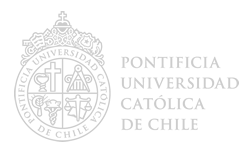Heterosis for yield contributing head traits in cabbage (Brassica oleracea var. capitata)
Abstract
The present investigation was carried out to study the direction and magnitude of heterosis in twenty-four hybrids for yield contributing head traits in cabbage (Brassica oleracea var. capitata L.). A field experiment was conducted during the cabbage growing season of 2011-2012 at the Black Sea Agricultural Research Institute, Samsun, Turkey. Hybrids and parents were evaluated in a randomized block design with three replications. Measurements were performed for head weight, head diameter and head length to estimate mid-parent and better-parent heterosis in each hybrid. The direction and magnitude of mid-parent and better-parent heterosis among hybrids for all the head traits was found to be highly variable. The maximum and significant heterosis in favorable directions both over mid parent and better parent for head weight (73.6 and 62.3%, respectively), head diameter (39.6 and 39.1%, respectively) and head length (25.3 and 21.6%, respectively) was observed in the hybrid P8 × P14. In this study, the hybrids P8 × P14, P3 × P13, P3 × P14 and P8 × P13 were found to be promising hybrid combinations with regard to their per se performance for head traits and the magnitude of heterosis. These hybrids can be selected for commercial exploitation of hybrid vigor. Thus, the information generated from this study might be vital and useful for breeders to develop hybrid varieties with better head traits and high yield through heterosis breeding.
Esta investigación se ha realizado para investigar la dirección y la dimensión de heterosis en los veinticuatro mestizajes correspondiendo con las características cabezales productivas del repollo (Brassica oleracea var capitata L.). El experimento de area se hizo durante la temporada 2011-2012, en el Instituto de Investigaciones Agriculturas en Samsun, Turkía. Los mestizajes y los portainjertos se evaluaron en el diseño en bloques aleatorizados, con tres repeticiones. Para hacer la estimación de heterosis de portainjerto superior y media de cada mestizaje se midió el peso, el diámento y la longitud de la cabeza de repollo. Para todas las caracteristicas de la cabeza, la dirección y la dimención del heterosis medio y superior entre los mestizajes fue muy variable. En los mestizajes de P8 × P14, el peso de la cabeza (73,6 y 62,3%, respectivamente), el diámetro (39,6 y 39,1, respectivamente), y la longitud de la cabeza (25,3 y 21,6%, respectivamente), se observó un maáimo y una cantidad importante de heterosis en el portainjerto medio y superior suficiente. En este estudio, las combinaciones de mestizajes P8 × P14, P3 × P13, P3 × P14 y P8 × P13, resultaron ser prometedoras en cuanto al rendimiento per se de las caracteristicas de la cabeza y la magnitud de la heterosis. Estos mestizajes se pueden elegir para aprovechar de vigor híbrido de heterosis, en el comercio. Por lo cual, las informaciones obtenidas gracias a estos estudios, pueden ser beneficiosos y vitales para cultivar unos tipos de mestizajes que tienen una productividad superior y mejores características de la cabeza del repollo a través del mejoramiento de heterosis por los agricultores.

